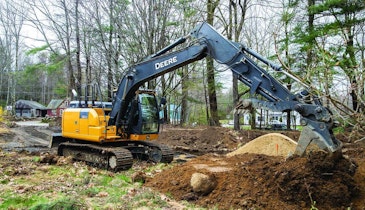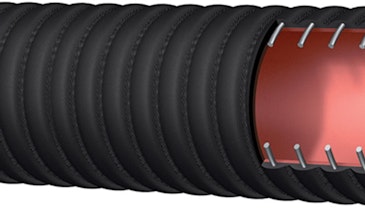When it comes to directional drilling in rock, operators face numerous challenges. The hardness and unpredictability of rock formations require precise control and consistent power from the drill. Too much or too little force can lead to inefficient drilling, equipment damage and even project failure.
“Drilling inconsistent rock formations is where drill operators are really put to the test,” says Jeff Utter, product manager for Vermeer. “Maintaining a slow, steady pace requires constant adjustments to avoid stalling the drill string. Whether using an automatic mode or drilling manually, the objective is to maintain the maximum allowable weight on the bit while preventing frequent rotational stalls.”
Most HDD rigs struggle with this balance of power and control, often leading to overcompensation by the operator and inconsistent drilling performance.
Control is key
Ultraslow speed control technology fundamentally changes the way HDD operators approach drilling in rock. The technology allows for precise control over the drill’s thrust, optimizing the cutting action for challenging rock bore conditions.
“It’s not necessarily about slow speed; it’s really about controllability,” says Utter. “Slow speed often lends to controllability. Feathering the thrust manually doesn’t always allow the operator to maintain a consistent weight on the bit. This technology is not about making the drill slower, it’s about giving the operator more control over the drilling process. It’s the ability to adjust the speed and power of the drill to maintain a constant weight on the drill bit, allowing optimal cutting performance and efficient drilling.”
The Vermeer D550 horizontal directional drill is one of the first HDD rigs to implement ultraslow speed control technology. It is designed to deliver optimal operational and service experience for contractors.
Benefits of the technology
The introduction of ultraslow speed control technology in the Vermeer D550 HDD has several benefits for contractors using directional drilling in rock.
Ultraslow speed control technology enhances operator control. With this technology, the operator can better manage the balance between power and control, leading to more efficient drilling. This enhanced control allows the operator to push the drill closer to its limits while limiting the risk of stalling, helping lead to more efficient and productive drilling.
One of the most significant benefits of ultraslow speed control is the reduction in equipment stalls. With ultraslow speed control, the drill can maintain a consistent pace, minimizing the likelihood of stalling. This helps optimize productivity on the job site.
Another benefit of ultraslow speed control is it can help operators extend the life of drill tooling. By maintaining a consistent weight on the bit, the drill is able to optimize the cutting action, minimizing wear and tear on the tooling and extending its life.
Enhancing rock drilling
Ultraslow speed control is an innovative technology that can enhance the process of directional drilling in rock. By providing precise control over the drill’s thrust, this technology allows for optimal cutting action, minimized equipment stalls, improved tooling life and enhanced operator control.
If you want to learn more about the Vermeer D550 HDD and how it can help you with productive directional drilling in rock, contact your local Vermeer dealer.
Vermeer Corporation delivers a real impact on the way important work gets done through the manufacture of high-quality agricultural, underground construction, surface mining, tree care and environmental equipment. With a reputation for being built tough and built in a better way, Vermeer equipment is backed by localized customer service and support provided by independent dealers around the world.
641-628-3141 | salesinfo@vermeer.com | www.vermeer.com





